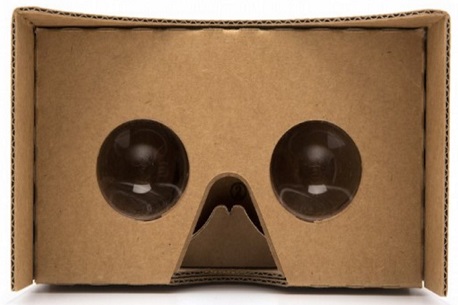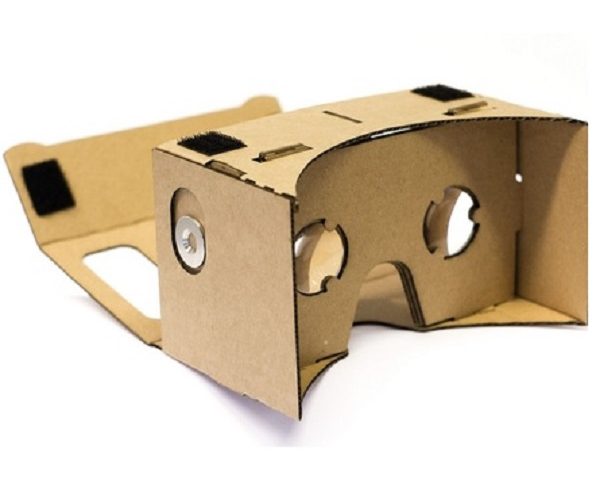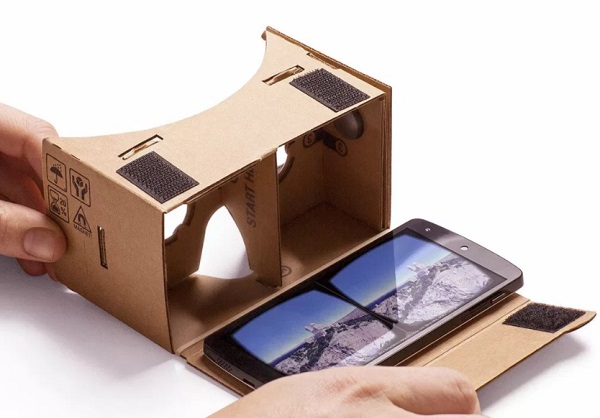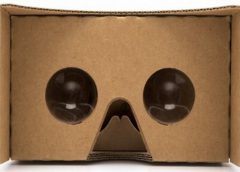
Presentation: When it comes to the unboxing experience of the ‘Google Cardboard’ headset, it really was more about the ‘making’ of the headset because the first generations of this mobile VR headset came in the form of a flat piece of card that you then folded into shape. The only thing extra it came with was a magnet and a washer (yes, a normal steel washer) so you could make the top clicker button) You could purchase them from Google for free and all you had to pay was for the postage. The making of them was the fun part here and at the time it was pretty interesting.
Google Cardboard Box Contents
-
- Google Cardboard (flat packed)

Description: Google Cardboard is a virtual reality (VR) platform developed by Google. Named for its fold-out cardboard viewer into which a smartphone is inserted, the platform was intended as a low-cost system to encourage interest and development in VR applications. Users can either build their own viewer from simple, low-cost components using specifications published by Google or purchase a pre-manufactured one. To use the platform, users run Cardboard-compatible mobile apps on their phone, place it into the back of the viewer and view content through the lenses.
The platform was created by David Coz and Damien Henry, French Google engineers at the Google Cultural Institute in Paris, in their 20% “Innovation Time Off”. It was introduced at the Google I/O 2014 developers conference, where a Cardboard viewer was given away to all attendees. The Cardboard software development kit (SDK) was released for the Android and iOS operating systems; the SDK’s VR View allows developers to embed VR content on the web as well as in their apps.
Headset: Google Cardboard
Manufacturer: Google LLC
Launch Price: Free
Release Date: June 2014
Headset Type: Mobile VR Headset
Compatible Smartphones: All Smartphones up to 6 inches (150 mm)
Field of View(FOV): 90°
Interpupillary Distance Adjustment: No
Screen Focus Adjustment: No
Weight: 30 g (1.05 oz)

Review: People will look back on the Google Cardboard and laugh, but at the time it opened the barriers of VR for the masses. No longer did you need an expensive VR headset, all you needed was your smartphone and it worked surprisingly well (provided the apps were basic in terms of navigation and interaction). Classrooms could use them, in fact just about anyone with a smartphone could use it (even iPhone users!). Sure, it cut into your nose if you used it for too long and it wasn’t exactly immersive. But with the right app, it could still blow people’s minds away.

